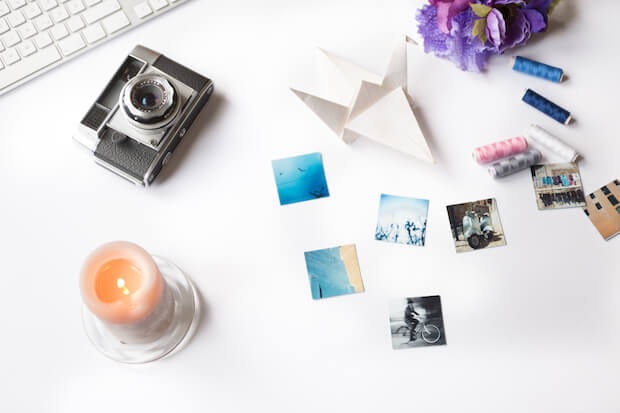
Most of us find mathematics difficult or boring. Why should we question the importance of learning math beyond the classroom and its relevance to our everyday lives? As much as we dread it, math is a fun subject to learn about! [Read more…]
Tutoring Agency
In this section of our education blog, we give tips for tutors and teachers on how to teach subjects, keep kids passionate, and more. Subscribe to our newsletter (on the left or below on mobile) to get bi-monthly updates in your inbox!

Most of us find mathematics difficult or boring. Why should we question the importance of learning math beyond the classroom and its relevance to our everyday lives? As much as we dread it, math is a fun subject to learn about! [Read more…]

If your child is learning another language, it usually takes time for them to go from participating in simple conversations to utilizing academic language in a meaningful way. However, providing extra support for language is not only helpful for English language learners and other second language learners. All learners can benefit from purposeful language activities. Here are 3 significant language teaching strategies to use in the classroom or at home: [Read more…]

In the past, we’ve written about the different types of learning styles. That is one theory which posits we should be teaching based on how our students like to learn, or how they learn best.
But there is another theory that, while sounding similar, is not. It brings about another opinion on how we should view our human ‘smart-ness.’ It says we should be viewing many forms of aptitude as ‘intelligent’ and thus, teach by recognizing a person’s core strengths. We’ll unpack that in a bit. [Read more…]

Whether you are a parent, a tutor, or a classroom teacher, you have most likely wondered at some point or another how to give your kids a fun, exciting project that furthers their learning at the same time. A theory floating around in the education world known as ‘interdisciplinary learning’ can be a great way to engage your kids in a meaningful way. Keep reading to decode this educational buzzword and see what it actually looks like in reality.
Myra Strober explains this term by thinking about a meal: if you have peas on a plate, this can be likened to a discipline of learning. If you add carrots onto the plate, you now have two disciplines, which can be labeled ‘multidisciplinary.’ But ‘interdisciplinary’ in this analogy would be if you then mixed the peas and carrots together to make a salad. Rather than being isolated, these two ‘disciplines’ have been integrated together to make something new. Through this lens, we can view interdisciplinary learning as an approach that integrates multiple disciplines to solve a problem.
Think about any big problem in the world. Chances are, the entire problem is not ‘I need to solve this specific type of math equation.’ Rather, a problem could potentially be related to poverty, sustainability, or transporting goods to a remote community (perhaps even all three). These types of problems require many different disciplines to come together in order to form a solution.
Interdisciplinary learning focuses learning on life skills such as critical thinking, collaboration, creativity, innovation, and problem-solving. This leads to what Carleton College calls “significant learning.” It can be very valuable, since the skills acquired are found in various subjects or streams of study, and are designed to get students to apply what they’ve learned in new contexts.
The internet is full of great ideas for interdisciplinary projects, so definitely check out Google or Pinterest for inspiration. Here is an example from High Tech High to get you going, and another from Amy Singh (which is great to view if you are working with an individual learner). Enjoy exploring different problems with your kids and see where their creativity takes them!
Whether you are looking for an interdisciplinary project to do with your kids over the holidays, searching for a way to engage your tutoring group, or trying to plan a unit for your class at school, using an interdisciplinary approach is highly beneficial. Since they are designed to be based on real-life problems, they can fit in with any age group, given the project matches their current contexts.

See our other articles on this series below:
In this series on teaching kids how to start a newspaper, we realize the goal of these lessons is not to produce career journalists out of our students. Instead, it is to help them become media literate.
It is important, as kids mature into adults, that they understand they are being given curated and selective messages in the media. This can affect what they believe to be true, or the biases they maintain. And, this is not just about understanding propaganda like the North Korean government-controlled media. Or war propaganda, which they may learn about in history class. Media messaging can be subtly biased, without being out-right propaganda.
Today, with the advent of mobile phones and easy-to-publish tools (like online blogs), it is the citizens who can do much of the reporting of what happens. This has brought about debate; there are pros and cons to citizen journalism.
In a way, though, some of the responsibility of making information accessible now lies on us – citizens – as opposed to editors, journalists and media conglomerates.
And so, are our children aware of these issues? Are they able to discern stories that need to be told to a wider audience? Do they know when to turn the camera on, and when to leave it off? And, can they identify the difference between quality journalism, and unprofessional reporting?
One of the best ways to learn is by example. In your class, group tutoring session or homeschooling lesson, you can show kids how citizen journalism has affected media coverage until today.
While not citizen journalism per se, the recent 2017 solar eclipse that travelled across North America brought about a citizen science project. People everywhere could record images of the solar eclipse, and its effects, thus helping scientists gather more data. This is the type of thing you can get your students to participate in, and teach them a science lesson about it too!
This article on CNN.com gives several examples of citizen journalism, and some may resonate with kids too. And this article, about the citizen reporting of the Ferguson riots, can get kids thinking about the way in which our cameras and mobile devices play a part in democracy and civil rights.
Although, we would advise that you use caution when presenting cases to certain age groups or personalities, as they can bring about some other serious talks, which parents may want to have with their kids.
As this article explains, our kids of today need to understand how to be citizen journalists in a responsible way. The role of journalists in the recent past was to report on events with training, and an understanding of the laws and moral implications of doing so.
For instance, kids should be taught about the difference between citizen journalism and an invasion of privacy. They also need to know the potential downfalls of publishing hearsay and rumour, as opposed to hard facts and research. They also need to understand how context changes the meaning and interpretation of a video or photo – the things that happened before and after can tell a new story. And, as we discussed in earlier lessons of this series, kids need to be taught the difference between opinion and fact – and that means recognizing their own bias too (the ones we all think we don’t have, included!).
This page of Wikipedia also explains how citizen journalism differs from other types of efforts, with similar naming. It gives a rundown of the history of citizen journalism, its uses, and its outlets too.
We found a couple of lessons you can use when teaching kids about citizen journalism:
After learning the ins and outs of responsible reporting, we hope that kids can learn the importance of citizen journalism, its dangers, and its role within a democratic society. They may not turn reporting into their career of choice. But that hasn’t stopped many who contribute to society’s storytelling today, still making a difference through mass media.

See our other articles on this series below:
In follow up to our series on teaching kids how to start a newspaper, this lesson will focus on photojournalism.
While we are now entering into the more creative aspects of the news media industry, we can’t forget that these are not just ‘fun’ topics (but they are, so enjoy them!). Creative parts of media publication and broadcasting still affect the consumption of news by the masses, and how we perceive the importance of certain news topics. Our exposure to imagery, or lack thereof, can shape our world perception.
For example, this article explains how strong imagery of a drowned boy escaping Syria began to change political policies around the world (despite that issue occurring for several months, if not years earlier). But when Boko Haram massacres 2000 people, we know little of it, and thus the world is not as outraged. Why is that?
And, society abounds with examples of celebrity photos and their influence on our buying decisions. Think: Sophie the Giraffe, an over-priced teething toy that got popular because celebrities started using it, and were seen with it.
And so, do our young students of today understand the way media imagery can influence their bias? We talked about bias on past resources in this series, which we encourage you to read up on (see links above). Today, we will learn how to teach kids about photojournalism, so they can understand the process that creates influence.
And possibly more…
See related posts on our blog:
Below are some lesson plans we’ve found to help you teach photojournalism to kids. You can adapt these, and also find ways to incorporate integrated topics or discussions.
Composition and Photojournalism and Composition for Elementary Students
Photojournalism: A New York Times Learning Network Lesson Plan Unit
Photojournalism Scope & Sequence 18 Week Class
Documentary Photography and Photojournalism: Still Images of a World in Motion (MIT Open Courseware)
Teaching Digital Photography to Students
Photojournalism: Lesson for Kids
Restrictions on Photographing Sports Events (while this is a USA-based article, principles can apply to Canadians too, and in different contexts, not just sports).
Transforming Students into Citizen Journalists
How Photojournalism Connects Kids and Community
To conclude, we want to let you know that some of the prime examples of photojournalism can be shocking – most especially because they depict the brutality of war victims. Above we mentioned the photo of a drowned Syrian boy that sparked public policy on the refugee crisis. To be frank, parents may not want their children exposed to the world’s perils in the classroom. These are extremely sad situations, and not all kids – regardless of age group – may be ready to see those realities. And so, before you use those types of examples in your classroom, make sure the parents know, and can speak up about it beforehand. Otherwise, use photo examples that won’t require an explanation on why the world is such a terrible place.
For further information or to schedule a free consultation, please fill in your details below.
 604-439-1790
604-439-1790
For further information or to schedule a free consultation, please fill in your details below.
 604-439-1790
604-439-1790
For further information or to schedule a free consultation, please fill in your details below.
 587-355-9755
587-355-9755
For further information or to schedule a free consultation, please fill in your details below.
 01284 598034
01284 598034
For further information or to schedule a free consultation, please fill in your details below.
 604-9001-604
604-9001-604
For further information or to schedule a free consultation, please fill in your details below.
 604 283 9914
604 283 9914
For further information or to schedule a free consultation, please fill in your details below.
 587-355-9755
587-355-9755
For further information or to schedule a free consultation, please fill in your details below.
 587-355-9755
587-355-9755
For further information or to schedule a free consultation, please fill in your details below.
 587-355-9755
587-355-9755
For further information or to schedule a free consultation, please fill in your details below.
 587-355-9755
587-355-9755
For further information or to schedule a free consultation, please fill in your details below.
 587-355-9755
587-355-9755
For further information or to schedule a free consultation, please fill in your details below.
 0113 465 0044
0113 465 0044
For further information or to schedule a free consultation, please fill in your details below.
 +971-58-559-EASY
+971-58-559-EASY
For further information or to schedule a free consultation, please fill in your details below.
 0208 066 1443
0208 066 1443
For further information or to schedule a free consultation, please fill in your details below.
 01727 639500
01727 639500
For further information or to schedule a free consultation, please fill in your details below.
 01923 547407
01923 547407
For further information or to schedule a free consultation, please fill in your details below.
 613-600-2655
613-600-2655
For further information or to schedule a free consultation, please fill in your details below.
 1(289)295-1323
1(289)295-1323
For further information or to schedule a free consultation, please fill in your details below.
 021 2021199
021 2021199
For further information or to schedule a free consultation, please fill in your details below.
 07957 421 885
07957 421 885
For further information or to schedule a free consultation, please fill in your details below.
 07957 421 885
07957 421 885
For further information or to schedule a free consultation, please fill in your details below.
 0113 465 0044
0113 465 0044
For further information or to schedule a free consultation, please fill in your details below.
 01422 767 700
01422 767 700
For further information or to schedule a free consultation, please fill in your details below.
 0208 066 1443
0208 066 1443
For further information or to schedule a free consultation, please fill in your details below.
 03330 151932
03330 151932
For further information or to schedule a free consultation, please fill in your details below.
 289 787 0800
289 787 0800
For further information or to schedule a free consultation, please fill in your details below.
 +383 (0)48 473 279
+383 (0)48 473 279
For further information or to schedule a free consultation, please fill in your details below.
 07541 100 425
07541 100 425
For further information or to schedule a free consultation, please fill in your details below.
 01 5563553
01 5563553
For further information or to schedule a free consultation, please fill in your details below.
 03330 151932
03330 151932
For further information or to schedule a free consultation, please fill in your details below.
 03330 151932
03330 151932
For further information or to schedule a free consultation, please fill in your details below.
 604 283 9914
604 283 9914
For further information or to schedule a free consultation, please fill in your details below.
 07541 100 425
07541 100 425
For further information or to schedule a free consultation, please fill in your details below.
 587 355-5735
587 355-5735
For further information or to schedule a free consultation, please fill in your details below.
 954 395 2507
954 395 2507
For further information or to schedule a free consultation, please fill in your details below.
 561-463-4000
561-463-4000